Don't wanna be here? Send us removal request.
Text
Week 10: Understanding Gender Disparities in Online Harassment
The advent of the Internet and social media has vastly expanded the realm of free expression, challenging the traditional gatekeeping role of mainstream media (Bruns 2005) and ostensibly democratizing the public sphere (Ash 2017). However, alongside this newfound freedom, concerns have emerged regarding the polarization of public discourse, the prevalence of aggressive communication styles, and the silencing effects of online harassment (Fladmoe & Nadim 2017)
Gender-based online harassment is increasingly recognized as disproportionately affecting women. However, current claims often lack empirical support, relying on anecdotal evidence or high-profile cases (Nadim & Fladmoe 2019). This post aims to elucidate whether women indeed experience more and different forms of online harassment compared to men.
In the first part, we will discuss the definition of online harassment. “Online harassment refers to a broad spectrum of abusive behaviors enabled by technology platforms and used to target a specific user or users.” (Blackwell et al. 2017). This harassment often manifests through hyperbolic and sexualized language, including threats and fantasies of violence (Jane 2012; Jane 2014). Studies indicate a prevalence of online hate directed towards women, with women experiencing more sexualized harassment compared to men (Bartlett et al. 2014). While some research suggests that gender differences in online harassment are minimal, women tend to encounter more sexual harassment, while men face more name-calling and physical threats (Powell & Henry 2015). Despite discrepancies in findings regarding overall exposure levels, it's consistent that men and women experience different forms of online harassment (Nadim & Fladmoe 2019).
It is considered that exposure to online harassment is influenced by factors beyond gender, such as political ideology and online behavior (Nadim & Fladmoe 2019). For example, individuals expressing non-mainstream political views or engaging in aggressive online discussions are more likely to experience harassment. According to Nadim and Fladmoe (2019) women may face harassment targeting their identity traits, whereas men may encounter more harassment related to their opinions.
In conclusion, contrary to common perceptions, it reveals that women are not inherently more likely than men to face online harassment overall (Nadim & Fladmoe 2019). However, significant gender disparities emerge when considering the types of harassment encountered. Men tend to experience more harassment directed at their opinions or arguments, while women are disproportionately targeted based on their gender.

Reference list
Ash, TG 2017, Free speech : ten principles for a connected world, Atlantic Books, London.
Bartlett, J, Norrie, R, Patel, S, Rumpel, R & Wibberley, S 2014, Misogyny on Twitter, apo.org.au.
Blackwell, L, Dimond, J, Schoenebeck, S & Lampe, C 2017, ‘Classification and Its Consequences for Online Harassment’, Proceedings of the ACM on Human-Computer Interaction, vol. 1, no. CSCW, pp. 1–19.
Bruns, A 2005, Gatewatching : collaborative online news production, P. Lang, New York.
Fladmoe, A., & Nadim, M. (2017). Silenced by hate? Hate speech as a social boundary to free speech. In A. H. Midtbøen, K. Steen-Johnsen, & K. Thorbjørnsrud (Eds.), Boundary struggles: Contestations of free speech in the public sphere (pp. 45–75). Oslo, Norway: Cappelen.
Jane, EA 2012, ‘“Your a Ugly, Whorish, Slut”’, Feminist Media Studies, vol. 14, no. 4, pp. 531–546.
Jane, EA 2014, ‘“Back to the kitchen, cunt”: speaking the unspeakable about online misogyny’, Continuum, vol. 28, no. 4, pp. 558–570.
Nadim, M & Fladmoe, A 2019, ‘Silencing Women? Gender and Online Harassment’, Social Science Computer Review, vol. 39, no. 2, p. 089443931986551.
Powell, A., & Henry, N. (2015). Digital harassment and abuse of adult Australians: A summary report. Tech & Me Project, Melbourne: RMIT University and La Trobe University.
0 notes
Text
Week 9: Exploring the Fusion of Gaming and Social Media
Hey gamers! Let’s have a look at the fascinating world where gaming and social media collide. First, we need to define what a game is and also, we need to discover the evolution of the gaming industry. According to Ellington, Addinall and Percival (1986), game is defined as “any contest (play) among adversaries (players) operating under constrains (rules) for an objective (winning, victory pay-off).”

The gaming industry has undergone a remarkable evolution over the past five decades, transitioning from humble beginnings to a global phenomenon. Starting from the experimental phase in the late 1990s, where games like Warcraft and Half-Life laid the foundation, to the emergence of online distribution platforms like Steam in the early 2000s, gaming has become increasingly accessible (Bankov 2019). The proliferation of subscription-based models, loot boxes, and microtransactions has reshaped revenue streams, while advancements in hardware and internet connectivity have fueled the popularity of cross-play and mobile gaming (Bankov 2019). The current decade witnesses a shift towards digital distribution networks and game launchers, marking a departure from physical copies. With platforms like Steam, Battle.net, and Epic Game Store dominating the landscape, the gaming industry continues to innovate and adapt to changing consumer preferences (Bankov 2019). Over the past few decades, the landscape of gaming has evolved significantly, with a notable emphasis on social interaction. Initially facilitated by platforms like Internet Relay Chat (IRC) and Instant Messaging (IM), multiplayer gaming has flourished, fostering community engagement and communication. The introduction of voice over Internet Protocol (VoIP) software like Ventrilo and TeamSpeak further enhanced this aspect. Discord, launched in 2017, emerged as a central hub for gamers, offering text and voice chat alongside other features. It is reported that Discord had about 130 million users in 2018 and doubled that number to 250 million in 2019 (Kerr, 2019). As the gaming industry expanded, developers sought innovative ways to promote their games, leveraging social media integration such as X sign-ins and Twitch streaming. Twitch's acquisition by Amazon in 2014 (Lopez 2014) propelled it to the forefront of live streaming, revolutionizing gaming content consumption and monetization through subscriptions and donations. Despite attempts by companies like Blizzard to integrate Facebook Streaming, platforms like X and Facebook are generally less favored by older gamers, while mobile gaming appeals more to younger demographics who are active on social media (Bankov 2019).

In conclusion, the merging of gaming and social media has revolutionized both industries, enhancing connectivity and reshaping consumer experiences. From early multiplayer platforms to modern communication hubs like Discord, social interaction has become central to gaming. The rise of online distribution, subscription models, and innovative revenue streams has boosted accessibility and revenue. Integrating platforms like Twitter and Twitch has transformed marketing and content sharing. As technology evolves, this synergy is expected to deepen, offering new opportunities for community engagement and interactive experiences.
Let's keep gaming and connecting, folks! 🚀🎮
Reference list
Bankov, B. 2019, The impact of social media on video game communities and the gaming industry, University of Economics in Varna, Varna.
Ellington, H, Addinall, E & Percival, F 1986, A handbook of game design, Kogan Page, London.
Kerr, C 2019, Discord surpasses 250 million registered users in four years, www.gamedeveloper.com.
Lopez, G 2014, Why Amazon spent $970 million to buy Twitch, Vox.
0 notes
Text
Week 8: The motivation for using AR beauty filters
Selfies have become an extremely popular culture on digital media platforms such as Facebook, Instagram, and Snapchat. It is estimated that every third photo people from 18 to 24 years old take is a selfie (Zetlin 2019). As the selfie trend continues to rise, there's an increasing demand for beauty features in various technologies, particularly in smartphones and social media apps. Instagram is one of the digital platforms that is famous for its beauty features which help users create visually appealing and engaging content (Vendemia & DeAndrea 2018). Augmented Reality (AR) filter is one of them. Since it appeared, AR filters have achieved an impressive number of users. It is reported that there are 600 million people use AR filters each month on Instagram or Facebook and 76% of Snapchat users use them every day (Bhatt 2020). In this post, we will discover the motivation for using AR face filters on social media.
It is suggested that the possible motivation for using AR face filters is related to self-presentation, enjoyment, social interaction, and convenience (Erz, Marder & Osadchaya 2018; Rauschnabel 2018; Sheldon et al. 2017; Throuvala et al. 2019).
Self-presentation
There are three distinct motivations prompting individuals to engage with augmented reality (AR) filters for self-presentation (Javornik et al. 2022). Firstly, users may employ these filters to authentically express facets of their true selves, which they might feel constrained from revealing in traditional face-to-face interactions (Javornik et al. 2022). Despite virtual alterations, these filters offer a platform for genuine self-expression, often inhibited offline (Javornik et al. 2022). Secondly, AR filters facilitate the projection of an idealized self-image, allowing users to embody aspirational traits such as beauty or coolness in real-time (Hong et al. 2020). By enhancing their appearance, users fulfill their desire for positive self-presentation, aligning with their idealized self-perception. Thirdly, individuals utilize AR filters to explore and visualize novel facets of their identity, transcending both their true and ideal selves. This transformative process, supported by digital technologies, enables users to experiment with new 'possible selves', expanding their self-concept and seeking novelty in their self-expression (Javornik et al. 2022). Collectively, these motivations influence the frequency of AR filter usage and the extent of exploration, shaping users' online self-presentation in multifaceted ways.
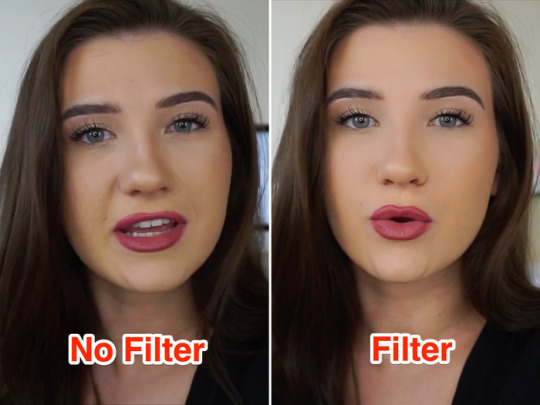
Enjoyment
Drawing parallels with other AR technologies and digital platforms, it suggests that the entertainment value of AR face filters contributes significantly to their appeal, fostering escapism and amusement (Javornik et al. 2022). With many filters incorporating humorous elements like funny virtual props, users find gratification in the enjoyable experience, akin to dressing up for themed parties (Javornik et al. 2022). Consequently, both the frequency of use and exploration of AR face filters are driven by the desire for entertainment and fun
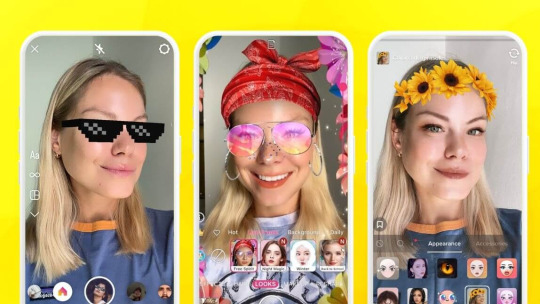
Social Interaction
While selfies are typically posted for social approval, AR filtered content serves broader purposes, such as initiating interactions and drawing attention to specific topics (Hong et al. 2020). AR filters elicit varied reactions from the audience, enhancing engagement and facilitating communication with followers (Javornik et al. 2022). Overall, the need for social interactions emerges as a significant motivator for both the frequency of filter use and exploration.
Convenience
AR filters offer convenience in creating relevant and meaningful content effortlessly (Javornik et al. 2022). Brands leverage AR try-on features for product search and decision-making in industries like makeup and fashion, eliminating the need for physical store visits. Similarly, social media users find convenience in applying AR filters for meaningful interactions without altering their appearance physically. This convenience factor is anticipated to drive both the frequency of use and exploration of AR filters on social media platforms.
In conclusion, the popularity of augmented reality (AR) face filters on social media stems from motivations like self-presentation, enjoyment, social interaction, and convenience. As the selfie trend persists and AR technology advances, these motivations will continue to shape the use of AR face filters, enriching the digital media experience.
Reference list
Erz, A, Marder, B & Osadchaya, E 2018, ‘Hashtags: Motivational drivers, their use, and differences between influencers and followers’, Computers in Human Behavior, vol. 89, pp. 48–60.
Hong, S, Jahng, MR, Lee, N & Wise, KR 2020, ‘Do you filter who you are?: Excessive self-presentation, social cues, and user evaluations of Instagram selfies’, Computers in Human Behavior, vol. 104, p. 106159.
Javornik, A, Marder, B, Barhorst, JB, McLean, G, Rogers, Y, Marshall, P & Warlop, L 2022, ‘“What lies behind the filter?” Uncovering the motivations for using augmented reality (AR) face filters on social media and their effect on well-being’, Computers in Human Behavior, vol. 128, no. 107126, p. 107126.
Rauschnabel, PA 2018, ‘Virtually enhancing the real world with holograms: An exploration of expected gratifications of using augmented reality smart glasses’, Psychology & Marketing, vol. 35, no. 8, pp. 557–572.
Sheldon, P, Rauschnabel, PA, Antony, MG & Car, S 2017, ‘A cross-cultural comparison of Croatian and American social network sites: Exploring cultural differences in motives for Instagram use’, Computers in Human Behavior, vol. 75, pp. 643–651.
Throuvala, MA, Griffiths, MD, Rennoldson, M & Kuss, DJ 2019, ‘Motivational processes and dysfunctional mechanisms of social media use among adolescents: A qualitative focus group study’, Computers in Human Behavior, vol. 93, pp. 164–175.
Vendemia, MA & DeAndrea, DC 2018, ‘The effects of viewing thin, sexualized selfies on Instagram: Investigating the role of image source and awareness of photo editing practices’, Body Image, vol. 27, pp. 118–127.
Zetlin, M 2019, Taking Selfies Destroys Your Confidence and Raises Anxiety, a Study Shows. Why Are You Still Doing It?, Inc.com, Inc.
0 notes
Text
Week 7: Microcelebrities and the Beauty Standard
🌟Today, let's delve into the question of how microcelebrities create the beauty standard. 🤓🔬
First off, who are microcelebrities? Microcelebrity is a mindset wherein users on social media present themselves as celebrities or act as though they are on the cusp of achieving celebrity status, without regard for the size of their audience (Senft, 2013). Their influence might be micro in scale, but the impact they wield is anything but small. This post seeks to analyze the intricate relationship between microcelebrity culture and the creation of beauty standards.
Social Media as the Platform for Microcelebrity:
Microcelebrities often find their platforms on social media, where they can cultivate a dedicated and engaged audience. According to Mavroudis (2020), social media is like a stage where people show themselves using a kind of celebrity-like talk. When we share pictures and videos on social media, it's like telling others about ourselves, but instead of just a small group of friends, it's for a much bigger audience (Marwick, 2015). The visual nature of platforms like Instagram, TikTok, and YouTube places a premium on appearance, providing an ideal environment for the propagation of beauty standards. The curated images and videos shared by microcelebrities contribute to the construction of an aspirational aesthetic.
Filtered Realities and Perceived Perfection:
Microcelebrities frequently employ various filters, editing tools, and curated content to present a polished version of themselves. On social media, people carefully create and shape how they present themselves, working behind the scenes to craft online profiles that reflect their desired image (Mendelson & Papacharissi 2010). This crafted image becomes a benchmark for beauty, creating an unrealistic standard that followers may strive to emulate. The constant exposure to these idealized visuals can contribute to the internalization of specific beauty norms, influencing individuals' self-perception.
Endorsement of Beauty Products and Services:
Microcelebrities often collaborate with beauty brands, endorsing products and services that align with their curated image. These collaborations reinforce certain beauty standards by associating them with the lifestyles and personas of these influencers. People act in certain ways and affect each other by seeing and acknowledging each other back and forth (Mavroudis 2020). Followers, seeking to emulate their favorite microcelebrities, may be inclined to adopt these products in pursuit of the endorsed standard of beauty.
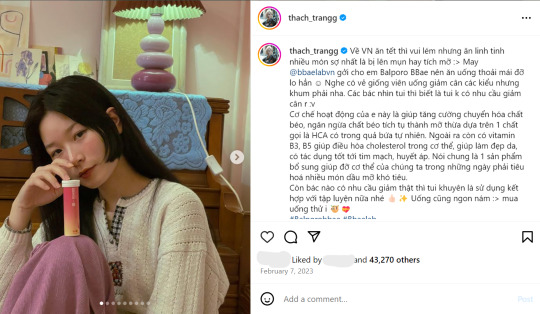
In conclusion, the symbiotic relationship between microcelebrity culture and the creation of beauty standards is evident in the dynamics of social media self-presentation. Microcelebrities leverage these platforms to construct and project aspirational images, shaping societal ideals of beauty. The filtered realities, pursuit of perfection, and endorsement of beauty products collectively contribute to the establishment and perpetuation of specific beauty standards. As consumers of this curated content, individuals must critically engage with these influences to foster a more inclusive and authentic representation of beauty in the evolving landscape of microcelebrity culture.
Reference list
Marwick, AE 2015, ‘Instafame: Luxury Selfies in the Attention Economy’, Public Culture, vol. 27, no. 1, pp. 137–160, viewed <https://read.dukeupress.edu/public-culture/article/27/1%20(75)/137/31071/Instafame-Luxury-Selfies-in-the-Attention-Economy>.
Mavroudis, J 2020, Am I Too Branded? Fame Labour and Microcelebrity Culture, viewed <https://researchbank.swinburne.edu.au/file/a9c91c82-0f40-4e0b-9e2e-9ec1433bafda/1/jonathan_mavroudis_thesis.pdf>.
Mendelson, A, & Papacharissi, Z 2010, 'Look at us: Collective Narcissism in College Student Facebook Photo Galleries', in Papacharissi, Z (ed.), The Networked Self: Identity, Community and Culture on Social Network Sites, Routledge, London.
Senft, T 2013, Microcelebrity and the Branded Self, viewed <https://fws.commacafe.org/resources/theresa_senft_microcelebrity_branded_self.pdf>.
0 notes
Text
Week 6: How Social Media Drives the Shift from Fast to Slow Fashion
In the contemporary era, fashion trends emerge and fade swiftly, leaving substantial environmental repercussions despite their brief existence. However, a shift is occurring as society grows more environmentally conscious and embraces a healthier lifestyle (Castro-López, Iglesias & Puente 2021). This shift has given rise to a novel concept known as 'slow fashion,' aiming to enhance the sustainability of fashion items by prioritizing environmental and ethical considerations (Castro-López, Iglesias & Puente 2021). What is leading this revolution? You guessed it - social media.

These days, it is not hard to find influencers, activists, and brands who are using platforms like Instagram, Facebook, and TikTok to shine a spotlight on the darker side of the fashion industry and champion a more mindful way of dressing.
So, what exactly is driving this change? Examining the barriers hindering customers from transitioning from fast fashion to slow fashion, there are four key points: consumer knowledge, trust, affordability, and style (Jacobson & Harrison 2021). The rise of social media has effectively addressed these challenges.
Firstly, despite a growing awareness of sustainability, consumer knowledge remains a stumbling block, as individuals often lack a comprehensive understanding of sustainable fashion to make informed purchasing decisions (Pookulangara & Shephard 2013). Influencers now leverage their social media platforms to educate consumers about the environmental and ethical implications of fast fashion. By disseminating knowledge and championing sustainability, influencers can shape consumption practices (Chwialkowska 2019).
Secondly, trust presents a substantial challenge for consumers adopting sustainable fashion practices (Henninger, Alevizou, and Oates 2016). Consumers may avoid buying sustainable products if they see brands are not truthful about their environmental promises (Phau and Ong 2007). However, influencers can have an impact on this concern. By listening to influencers’ experience and stories, customers tend to trust them more (Joosse & Brydges 2018). Their strong connections, source credibility, and parasocial interaction contribute to influencing consumer behavior (De Veirman, Cauberghe & Hudders 2017).
Finally, consumers are challenged by the perception of lack of affordability (Henninger, Alevizou, and Oates 2016) and lack of style (Henninger, Alevizou, and Oates 2016). While fast fashion remains easily accessible and budget-friendly, sustainable fashion often carries connotations of exclusivity and luxury (Gam, Ma & Banning 2014). Social media and influencers play a pivotal role in reshaping this perception. As we scroll through our feeds, we're bombarded with images of stylish influencers rocking vintage finds and eco-conscious brands. Suddenly, sustainable fashion doesn't seem so niche or inaccessible – it's aspirational, it's cool, it's the future.
In the end, the shift from fast to slow fashion isn't just about swapping out our wardrobe staples – it's a mindset shift, a reimagining of our relationship with clothing and consumption. And as we continue to harness the power of social media to drive this change, one post at a time, we're not just shaping the future of fashion – we're shaping the future of our planet. So let's keep scrolling, keep sharing, and keep pushing for a more sustainable, stylish tomorrow.
Reference list
Castro-López, A, Iglesias, V & Puente, J 2021, ‘Slow Fashion Trends: Are Consumers Willing to Change Their Shopping Behavior to Become More Sustainable?’, Sustainability, vol. 13, no. 24, p. 13858, viewed <https://www.mdpi.com/2071-1050/13/24/13858>.
Chwialkowska, A 2019, ‘HOW SUSTAINABILITY INFLUENCERS DRIVE GREEN LIFESTYLE ADOPTION ON SOCIAL MEDIA: THE PROCESS OF GREEN LIFESTYLE ADOPTION EXPLAINED THROUGH THE LENSES OF THE MINORITY INFLUENCE MODEL AND SOCIAL LEARNING THEORY’, Management of Sustainable Development Sibiu, Romania, vol. 11, no. 1, viewed <http://www.cedc.ro/media/MSD/Papers/Volume%2011%20no%201%202019/6.pdf>.
De Veirman, M, Cauberghe, V & Hudders, L 2017, ‘Marketing through Instagram Influencers: the Impact of Number of Followers and Product Divergence on Brand Attitude’, International Journal of Advertising, vol. 36, no. 5, pp. 798–828, viewed <https://www.tandfonline.com/doi/abs/10.1080/02650487.2017.1348035>.
Gam, HJ, Ma, YJ & Banning, J 2014, ‘Socially Responsible Apparel Labels: Effects on Fashionable Shoppers’, Family and Consumer Sciences Research Journal, vol. 42, no. 3, pp. 292–305.
Jacobson, J & Harrison, B 2021, ‘Sustainable fashion social media influencers and content creation calibration’, International Journal of Advertising, vol. 41, no. 1, pp. 1–28.
Joosse, S & Brydges, T 2018, ‘Blogging for Sustainability: The Intermediary Role of Personal Green Blogs in Promoting Sustainability’, Environmental Communication, vol. 12, no. 5, pp. 686–700.
Pookulangara, S & Shephard, A 2013, ‘Slow Fashion Movement: Understanding Consumer Perceptions—An Exploratory Study’, Journal of Retailing and Consumer Services, vol. 20, no. 2, pp. 200–206.
Phau, I. & Ong, D. 2007, 'An investigation of the effects of environmental claims in promotional messages for clothing brands', Marketing Intelligence & Planning, vol. 25, no. 7, pp. 772–788.
Henninger, C.E., Alevizou, P.J., & Oates, C.J. 2016, 'What is sustainable fashion?', Journal of Fashion Marketing and Management, vol. 20, no. 4, pp. 400-416.
0 notes
Text
Digital Citizenship in the Age of Social Media: Navigating the Impact on Political Engagement

In our rapidly evolving digital age, the concept of digital citizenship has become increasingly crucial, especially as social media plays a significant role in shaping the dynamics of political engagement. Digital citizenship is defined as “those who use the Internet regularly and effectively” (Mossberger, Tolbert & Mcneal 2010). A digital citizen should possess characteristics that include a comprehensive understanding of human, cultural, and societal issues related to technology, associated with the commitment to practising legal and ethical behavior (Ribble 2008).
Social media, acting as a catalyst for change, serves as a powerful tool for informed political political news (Zhuravskaya, Petrova & Enikolopov 2020). Digital citizens use quick access to information to stay in the loop about what's happening worldwide, breaking down distance barriers and creating connections. It's important to use this ability responsibly, especially when keeping up with political news.
However, challenges arise in the form of algorithmic echo chambers that reinforce biases, threatening the principles of digital citizenship. Responsible online engagement demands that citizens break free from these bubbles, actively seeking diverse perspectives, and participating in open dialogues to reduce disagreement. Additionally, according to Papakyriakopoulos, Serrano and Hegelich (2020), people who participate in online discussions, expressing their opinions, have the power to shape how others, both active and passive users, understand political information. They can also directly impact the actions of political figures.
On the other hand, while certain studies suggest that using social media for news has a positive impact on democracy, encouraging political engagement, other research indicates a negative influence as it contributes to the dissemination of misinformation (Valenzuela et al. 2019). For this reason, digital citizens must be vigilant in critically evaluating information, fact-checking, and resisting the potential manipulation that threatens the integrity of democratic discourse.
Despite these challenges, social media remains a powerful tool for political mobilization, requiring digital citizens to engage responsibly. Grassroots movements, fueled by hashtag activism, exemplify the positive impact of digital citizenship in mobilizing individuals worldwide to advocate for change. The dissemination of information to a broad audience empowers citizens, fostering active engagement in shaping the narratives within the political sphere.
In conclusion, the multifaceted impact of social media on political engagement underscores the need for a strong foundation in digital citizenship. Being responsible digital citizens involves navigating the digital landscape with a critical eye, actively participating in diverse dialogues, and leveraging the power of social media to contribute positively to the democratic discourse of our times.
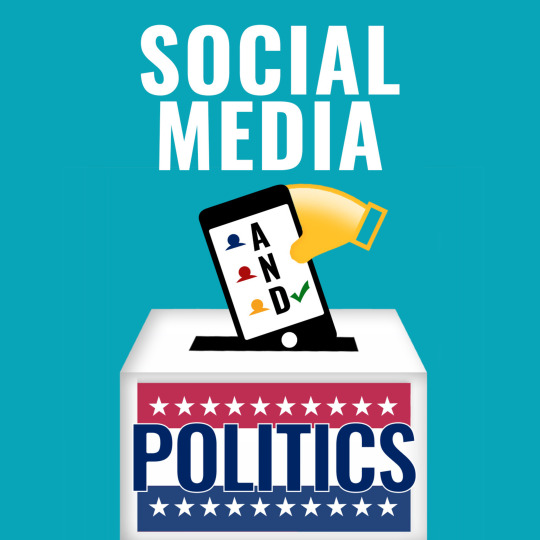
Reference list
Mossberger, K, Tolbert, CJ & Mcneal, RS 2010, Digital citizenship : the internet, society, and participation, Mit Press, Cambridge, Mass.
Papakyriakopoulos, O, Serrano, JCM & Hegelich, S 2020, ‘Political communication on social media: A tale of hyperactive users and bias in recommender systems’, Online Social Networks and Media, vol. 15, p. 100058.
Ribble, M 2008, Passport to Digital Citizenship, viewed <https://elem.hcdsb.org/stbernadette/wp-content/uploads/sites/30/2019/05/Passport-to-Digital-Citizenship-article.pdf>.
Valenzuela, S, Halpern, D, Katz, JE & Miranda, JP 2019, ‘The Paradox of Participation Versus Misinformation: Social Media, Political Engagement, and the Spread of Misinformation’, Digital Journalism, vol. 7, no. 6, pp. 802–823.
Zhuravskaya, E, Petrova, M & Enikolopov, R 2020, ‘Political effects of the internet and social media’, Annual Review of Economics, vol. 12, no. 1, pp. 415–438.
1 note
·
View note
Text
Reality TV and the Digital Public: Unveiling the Impact on Society
✨ Let's have a look into a topic that's been on my mind recently: the fascinating connection between reality TV shows and the creation of a digital public. 📺🌐
Firstly, let’s define reality TV. A simple definition for this term is an unscripted show where non-professional actors can engage. The participants will be observed by cameras in a preconfigured environment (Kavka 2012). So, does reality TV create a digital public?
Creating Digital Communities:
Here's the real magic of reality TV – it's not just about watching your screen. It's about the buzz that follows on social media, forums, and fan groups. These places turn into virtual hangouts where people chat, critique, and cheer for their favorite shows. Whether you're on #TeamA or #TeamB, there's a whole digital crew waiting to welcome you with open arms.
From Votes to Memes:
Reality TV isn't just about passive viewing; it's a participatory experience. Online voting, polls, and social media engagement turn viewers into active participants. The digital public is alive with discussions on who should stay, who should go, and what shocking twist just unfolded. Memes, fan art, and creative content flood the internet, turning the show into a living, breathing entity within the digital sphere.


Impact on Public Discourse:
Reality TV isn't just a show; it's like that friend who always sparks a conversation. It doesn't stay on the screen; it jumps into our everyday chit-chats and social discussions. From shedding light on real-world problems to setting the style agenda, these shows aren't just entertainment – they're influencers. And guess where all the buzz happens? The digital scene becomes this massive platform where we all share our thoughts on how reality TV is shaping cultural norms, challenging stereotypes, and tweaking our perspectives.
In conclusion, reality TV isn't just about drama and entertainment; it's a force that shapes our digital public sphere. As we navigate the online landscape, let's be mindful of the impact our discussions can have on the individuals involved. Let's keep the conversation alive and continue to explore the intersection of reality TV and the ever-evolving digital public we contribute to. 🌐💬✨
Reference list
Kavka, M 2012, Reality TV, Edinburgh University Press, Edinburgh.
1 note
·
View note
Text
Exploring the Tumblrverse: A Modern Frontier for the Public Sphere
✨ Let's dive into the fascinating world where our gifs, posts, and musings intersect with the concept of the public sphere! 🌍💭
First things first – what's the public sphere? In his work in 1991, Habermas delineates the public sphere as a realm where individuals, transitioning from private to public roles, converge to employ reason in advancing critical knowledge, thereby instigating political transformation. To consider a public sphere, there are three requirements. They are unlimited access to information, equal and protected participation, and the absence of institutional influence (Kruse, Norris & Flinchum 2018).
Now, let's talk about Tumblr. Is our beloved microblogging a part of this public sphere pie? 🥧 There are a lot of different opinions on this topic. However, I believe Tumblr can be considered a public sphere.
🌈 Diversity Rules: On Tumblr, where tons of people with varied interests hang out, it's like a digital version of the public sphere. Whether you're into niche hobbies, fan communities, or passionate about social justice, everyone's here, creating this mix of different views. It's like a bustling public square where folks come together to chat and exchange ideas. Scrolling through Tumblr is like strolling through a bustling marketplace where everyone's got something to say. 👩💻👨🎨👩🔬
🚀 Accessibility at its Core: Tumblr is designed to be a welcoming space where anyone, from different walks of life, can join in discussions without feeling out of place. It's this inclusive vibe that makes talking and sharing ideas feel like a community effort, sticking to the basic idea that conversations should be open to everyone, no matter who you are. Tumblr welcomes everyone to the party. You can join the convo whether you're a seasoned blogger, an artist, or just someone who loves reblogging cat videos.🎉🌐
🔒 Governance & Freedom: While Tumblr operates within a framework of community guidelines, its governance model tends to be less restrictive than traditional media outlets. Users enjoy a considerable degree of freedom in expressing their thoughts, fostering an environment where genuine dialogue can unfold. This balance between governance and expression is essential for cultivating a public sphere that encourages robust and diverse debates.📜✊
🗣️ Deliberate Discourse: Central to the public sphere is the notion of deliberative discourse – conversations characterized by reason and thoughtful engagement. Tumblr, through its reblogging and commenting mechanisms, facilitates discussions that often transcend mere commentary. Users engage in nuanced conversations, contributing to a deliberative space that echoes the ideals of the public sphere as envisioned by Habermas🤯💬
In a nutshell, Tumblr is a space where we engage in lively debates, share our passions, and contribute to the ever-evolving tapestry of public opinion.
What are your thoughts on Tumblr and the public sphere?
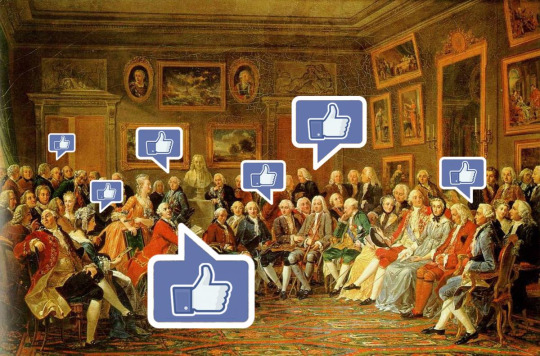
Reference list
Habermas, J 1991, The structural transformation of the public sphere : an inquiry into a category of bourgeois society, Massachusetts Institute Of Technology, Cambridge, Mass.
Kruse, LM, Norris, DR & Flinchum, JR 2018, ‘Social Media as a Public Sphere? Politics on Social Media’, The Sociological Quarterly, vol. 59, no. 1, pp. 62–84.
2 notes
·
View notes